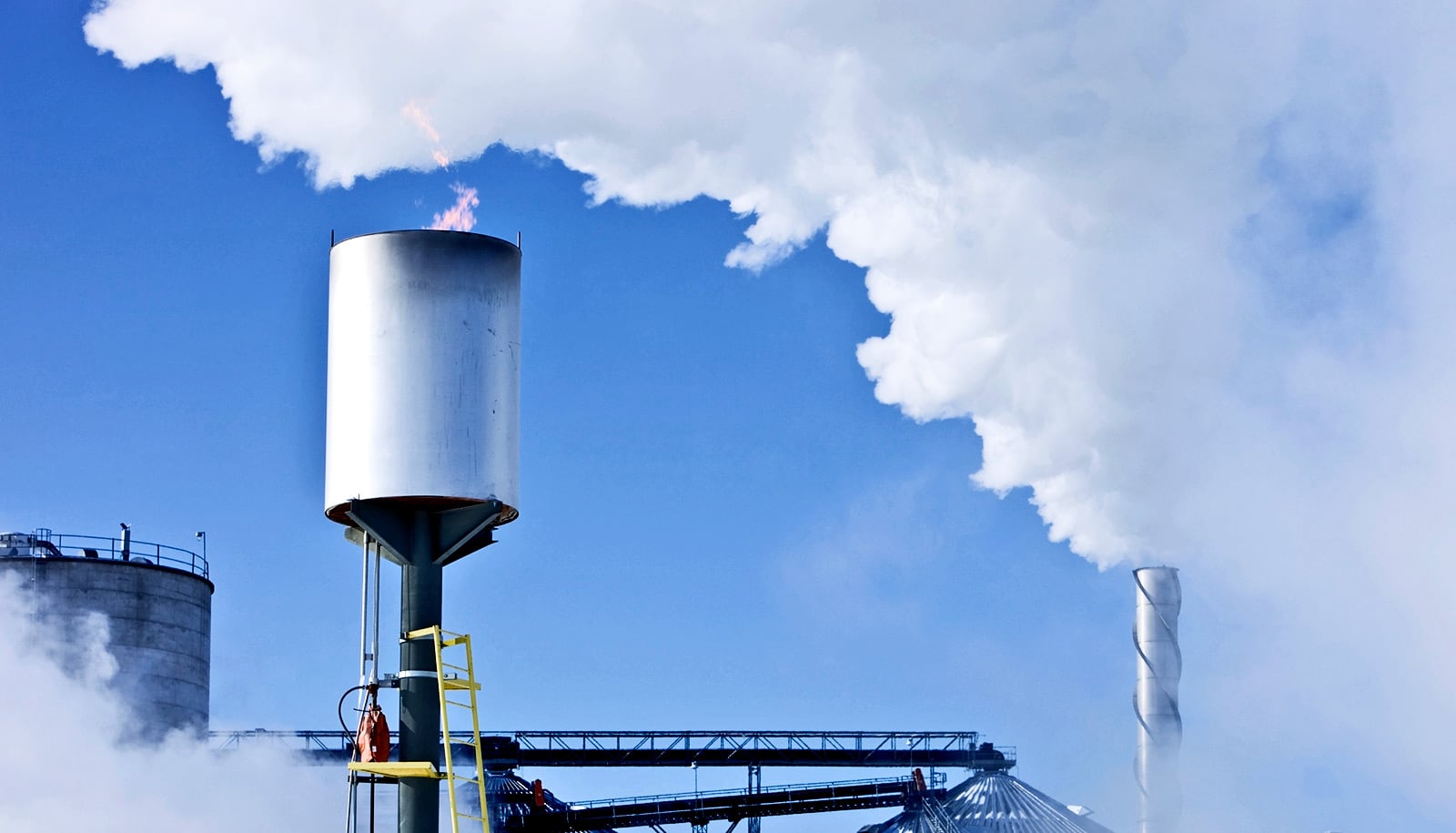A new discovery offers hope for cost-effective carbon capture and sequestration (CCS).
Although considered critical to avoiding catastrophic global warming, scientists have questioned the feasibility of carbon capture—removing carbon dioxide from the atmosphere and storing it underground, a process also known as negative emissions.
“There’s really no scenario that meets the world’s climate goals without negative emissions,” says Katharine Mach, a senior research scientist at Stanford University’s School of Earth, Energy and Environmental Sciences. “But most technologies for carbon removal are immature, largely unavailable, or expensive.”
A study in the Proceedings of the National Academy of Sciences runs the numbers on different options for removing carbon dioxide from the atmosphere in the United States and finds opportunities where it is not only commercially feasible with existing technology, but profitable.
This could work
The most widely discussed strategy for carbon capture involves growing plants, which absorb CO2, as a first step. The plan would involve processing those plants to produce energy, and capturing and storing any resulting CO2 emissions from that energy production.
While it seems straightforward, researchers haven’t fully developed these technologies—called bioenergy with carbon capture and sequestration, or BECCS—and many areas don’t have geology that’s suitable for storing CO2.
What’s more, pipelines would need to be built to take CO2 from bioenergy plants to areas suitable for storage. There are also serious questions about how BECCS would scale globally and compete with plants grown for food production or impact ecosystems and biodiversity.
However, one type of BECCS technology could work immediately for US ethanol producers, researchers say. What’s more, given current and predicted future financial incentives, the approach could even turn a profit.
“We found that between tax credits for CCS and upcoming financial incentives from low-carbon fuel standards, CCS is an untapped financial opportunity for ethanol producers across the US,” says lead author Daniel Sanchez, a postdoctoral scholar with the Carnegie Institution for Science.
The US is the largest producer of ethanol in the world, producing 15.8 billion gallons in 2017. Ethanol is made by fermenting biomass such as corn, which produces a high-purity CO2 by-product that is easier and cheaper to capture, compress, and inject underground than other emitted sources of CO2. Right now, ethanol producers largely vent emissions to the atmosphere in the process of making ethanol.
Ready and affordable
“Negative emissions at biorefineries is commercially ready and affordable. It offers a compelling way to build the real-world experience we need to develop future BECCS technologies,” Mach says.
The researchers estimate that 60 percent of all CO2 emitted annually through the production of ethanol at the country’s 216 biofuel plants (about 1 percent of all CO2 emissions from the US) could be captured at low cost, under $25 per metric ton of CO2.
Further, if credits for captured CO2 were set at $60 per metric ton, it could incentivize sequestration of 30 million metric tons of CO2 each year that producers otherwise vent into the atmosphere—equivalent to emissions from powering 3.2 million homes for one year—and pay for the construction of 4,300 miles of pipeline infrastructure needed to transport the CO2 for storage at appropriate sites across the country.
Cellulose know-how could lead to better biofuel
These incentives are in line with new tax credits included in the Bipartisan Budget Act of 2018 signed by President Trump in February. The bill amended section 45Q of the tax code so that power plants or CO2-emitting facilities are eligible for tax credits for captured CO2 for up to 12 years.
“There are many ways to incentivize and unleash negative emissions technologies, one of which this administration and Congress may have just put into place,” Mach says.
Another financial incentive comes in the form of low-carbon fuel standards, such as those implemented in Oregon, California, and British Columbia. It works by giving tradeable credits for fuels that exceed the standard and deficits to those who don’t.
Right now, accounting for CCS isn’t included in the standards, but on April 27, California will consider updating its rules to include new protocols that would quantify the value of carbon removal in the fuel production process. If adopted, fuel producers could collect more credits by selling lower-carbon ethanol in California.
“This is an opportunity not only for biofuel producers to make profits, but also for CCS technology to be more widely piloted and developed,” Sanchez says. “This is an essential first step if we’re going to deploy carbon removal at levels necessary to keep dangerous climate change in check.”
New ‘sponges’ capture carbon in a powder
Other coauthors are from the International Institute for Applied Systems Analysis, the Lawrence Livermore National Laboratory, and the Carnegie Institution for Science.
Source: Stanford University



